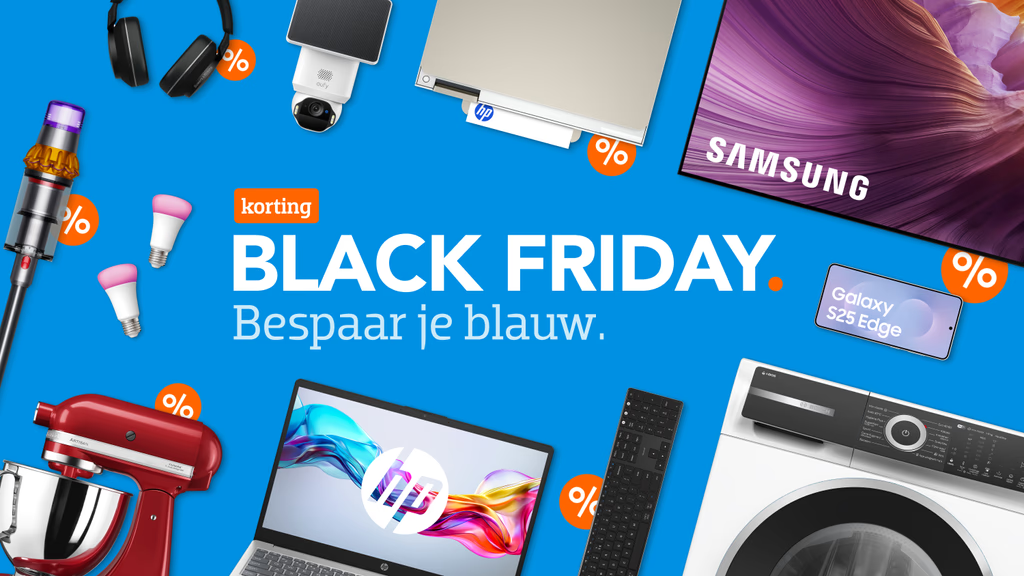And does it work? Yes. Every year, sales during Black Friday week are significantly higher than in an average week. Electronics, cosmetics, fashion, and gift items sell particularly well. Not just because of the discounts, but also because Black Friday falls right in the period when people are already shopping for Sinterklaas and Christmas. This creates a perfect mix of need, timing, and marketing pressure.
For marketers, Black Friday is a fascinating phenomenon: it clearly shows how companies use consumer behavior, trends, psychology, and timing to their advantage.
How Black Friday started
Black Friday originated in the United States and always takes place the day after Thanksgiving. In the 1960s, American stores began offering huge discounts to officially start the Christmas shopping season. The term Black Friday is said to have come from Philadelphia, where the police called it a “black day” due to the extreme crowds. Another explanation is that stores went “from red to black” in their accounts meaning they made a profit thanks to high sales.
What started as a busy shopping day has grown into a global marketing spectacle, where brands try every year to outdo each other with increasingly creative campaigns.
When Black Friday came to the Netherlands
Black Friday only became popular in the Netherlands around 2015–2016, when major retailers like Bol.com, MediaMarkt, and Coolblue started large-scale promotions. Thanks to the convenience of online shopping, the concept fit perfectly with Dutch consumers. Today, Black Friday has grown into a week, sometimes even a month of discounts, campaigns, and smart marketing tricks.
Why Black Friday is so interesting for marketers
Black Friday shows how brands influence unconscious decisions. Think of:
-
Scarcity (“Only 1 left in stock”)
-
Urgency (“Valid today only”)
-
Price anchors, making discounts appear bigger
-
FOMO
-
Data-driven targeting, like personalized offers
-
Cross-selling and upselling through bundles and “extra savings if you buy more”
These are the triggers that make us want to buy a product, even if we weren’t planning to.
Marketing tricks you encounter on Black Friday
1. The “fake discount”
Some companies increase a product’s price shortly before Black Friday, so they can offer a “big discount” during the sale. This is called price anchoring.
Even though consumers are becoming more critical, it still works, especially for products people know little about, like electronics, kitchen appliances, or gadgets.
2. Bundle deals that seem too good to be true
A product may look cheap, but the real profit for the company comes from what you buy alongside it.
For example: An electric toothbrush with 70% off, but the replacement heads cost €35 per set.
Clever, but tricky and very effective.
3. Exclusive email deals
Newsletters suddenly turn from boring updates into mini treasure hunts.
Brands use Black Friday to grow their mailing lists with messages like: “Sign up now to get first access to the best deals.”
this result in an email in the system, customer gained.
4. Social proof everywhere
During Black Friday, you see social proof all over, such as:
-
“93 people bought this in the last 24 hours”
-
“Only 3 left in stock!”
-
“Most popular choice among students”
Because consumers decide faster during Black Friday, this works very well.
Coolblue – the “Black Friday Month”
Coolblue is known for its humor, transparency, and service. Instead of one hectic day, they chose the “Black Friday Month.”
Why does this strategy work?
-
Less peak pressure: spreading deals over a month avoids website and logistics overload.
-
Daily new deals: consumers keep coming back: “Maybe my product will be on sale tomorrow.”
-
FOMO-light: each deal lasts only a short time, even though the campaign runs a whole month.
-
Brand consistency: Coolblue stays true to its friendly, humorous tone of voice.
A smart way to stay calm and stand out at the same time.
Conclusion
Black Friday is more than just a day of big discounts – it’s a masterclass in marketing psychology. Brands use every trick in the book to grab your attention, whether through humor, clever offers, or smart strategies. This November, pay attention to how companies try to influence your choices… and maybe you’ll spot how they’re trying to win you over too ;)

